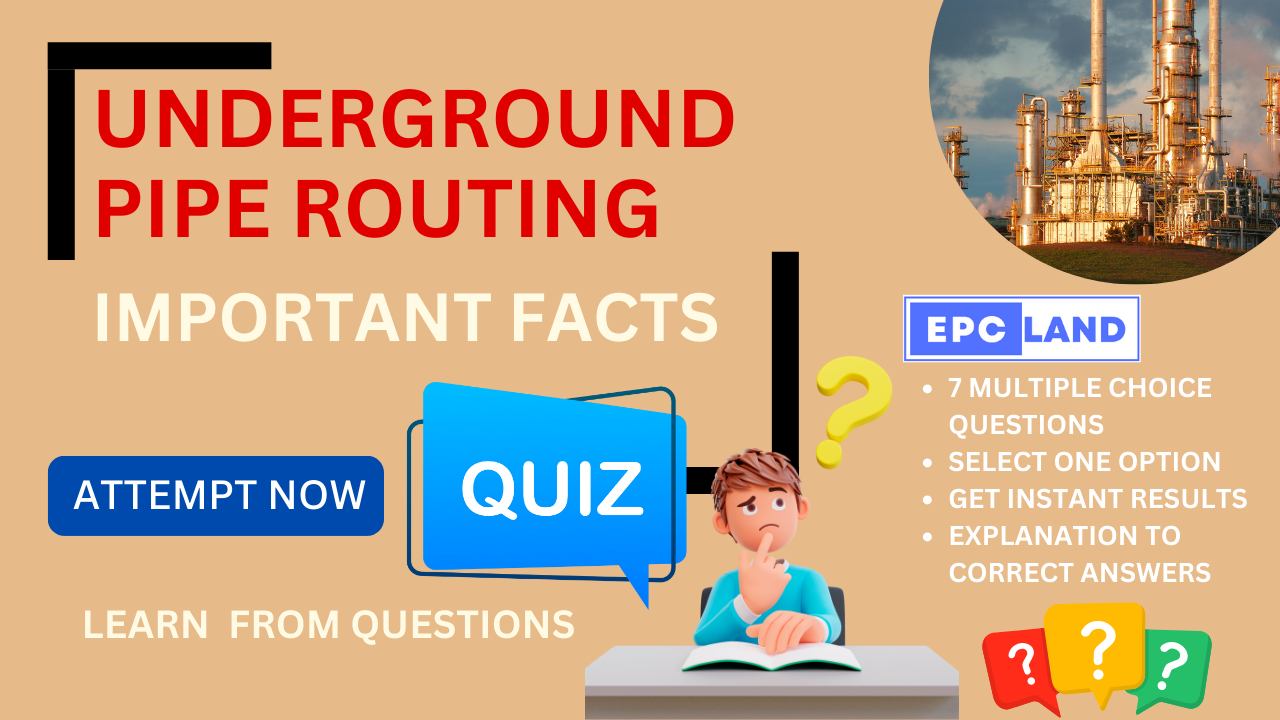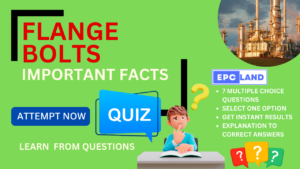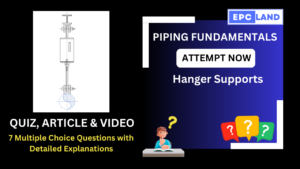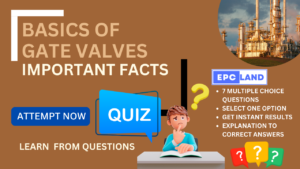1. Coating of Carbon Steel Below Grade
Where carbon steel is below grade, what is the recommended practice for protection according to the Technical specification of Painting, Wrapping & Coating?
Explanation: Carbon steel below grade should be coated and wrapped the entire distance according to the Technical specification of Painting, Wrapping & Coating.
2. Material for Potable Water Piping
What materials are recommended for potable water piping to eye wash, safety showers, and drinking fountains?
Explanation: Potable water piping to eye wash, safety showers, and drinking fountains should be of non-contaminating material such as copper, plastic, or galvanized pipe.
3. Installation of Underground Valves
How should underground valves be installed to allow for operation/maintenance from above grade?
Explanation: Underground valves should be installed with allowance for operation/maintenance from above grade with valve bonnet extensions or valve boxes with valve pit arrangement.
4. Metallic Piping Transition
How should metallic piping transition from underground to above ground?
Explanation: Metallic piping transition from underground to above ground shall be a flanged connection with an insulating bolt and gasket set per the Technical specification for Cathodic Protection and Gaskets and insulation kit.
5. Design Responsibility for Underground Piping
Who is responsible for the design of non-pressurized underground piping and pressurized underground piping?
Explanation: Non-pressurized underground piping will be designed by Site civil Engineering, whereas pressurized underground piping will be designed by Piping Engineering unless stated by the detail engineering contractor.
Table of Contents
Don’t miss the Course on Effective Isometrics Management: Check Now
Enrollment Link
Recommended courses (Published on EPCLand)
- Complete Course on Piping Engineering
- Basics of Piping Engineering
- Piping Layout Engineering
- Piping Material Engineering
- Piping Stress Analysis
- Material Requisitions
- Piping Material Specifications
- Valve Material Specifications
- Plant Design & Layouts-OISD 118
- Isometric Management
Library of Technical Articles
Don’t miss out the collection of 15+ articles on following topics:
- Basics of Oil and Gas Industry
- Valves
- Testing
- Tank
- Piping Bulk Items
- Pipe
- Metallurgy
- Piping Materials
- Layout
- Instrumentation
- Heat Exchanger
- Type of Contracts
- Codes and Standards
- ASTM Standards
- Articles on Piping Specialty Items
Video details of Complete Course on Piping Engineering
Why Enroll in the EPCLand
Proven Track Record– PTR
Activities & Achievements before launching EPCLand
- Published more than 50+ short courses
- 3000+ Enrolments
- More than 3,500,00 Minutes of watch hours in the last 2 years
- 4000+ Students in 100+ Countries
- Rating of 4+ out of 5
- 1000+ YouTube Videos
- 8K+ Subscribers
What Students will Learn
- Codes & Standards of the Energy Sector
- Piping Material Engineering
- Piping Layout Engineering
- Stress Analysis
Interesting facts
- All the published courses have been developed by Industry Experts with more than 2 decades of experience
- Content is based on Practical experience and real-time problems.
- Content is designed and organized in such a manner that it can be easily grabbed.
- Complete website, Blogs and Quiz sections are Planned, Designed and published by myself (About me: Atul Singla)
- Complete flexibility of Time & Location, Students can access the content from anywhere & anytime
- Moreover, once enrolled, the content can be access as many times as you want, which helps in understand the fundamentals in a better way.
Conclusion
In conclusion, our courses are meticulously crafted by industry experts with over two decades of hands-on experience. The content is rooted in practical knowledge, addressing real-time problems. The material is thoughtfully designed and organized for easy comprehension. Every aspect, from the website to blogs and quizzes, has been planned, designed, and executed by Atul Singla, ensuring a comprehensive and seamless learning experience. With the flexibility of accessing the content at any time and from any location, students have the freedom to learn on their terms. Furthermore, enrollment grants unlimited access, allowing learners to revisit the material as often as needed, fostering a deep understanding of the fundamentals.



